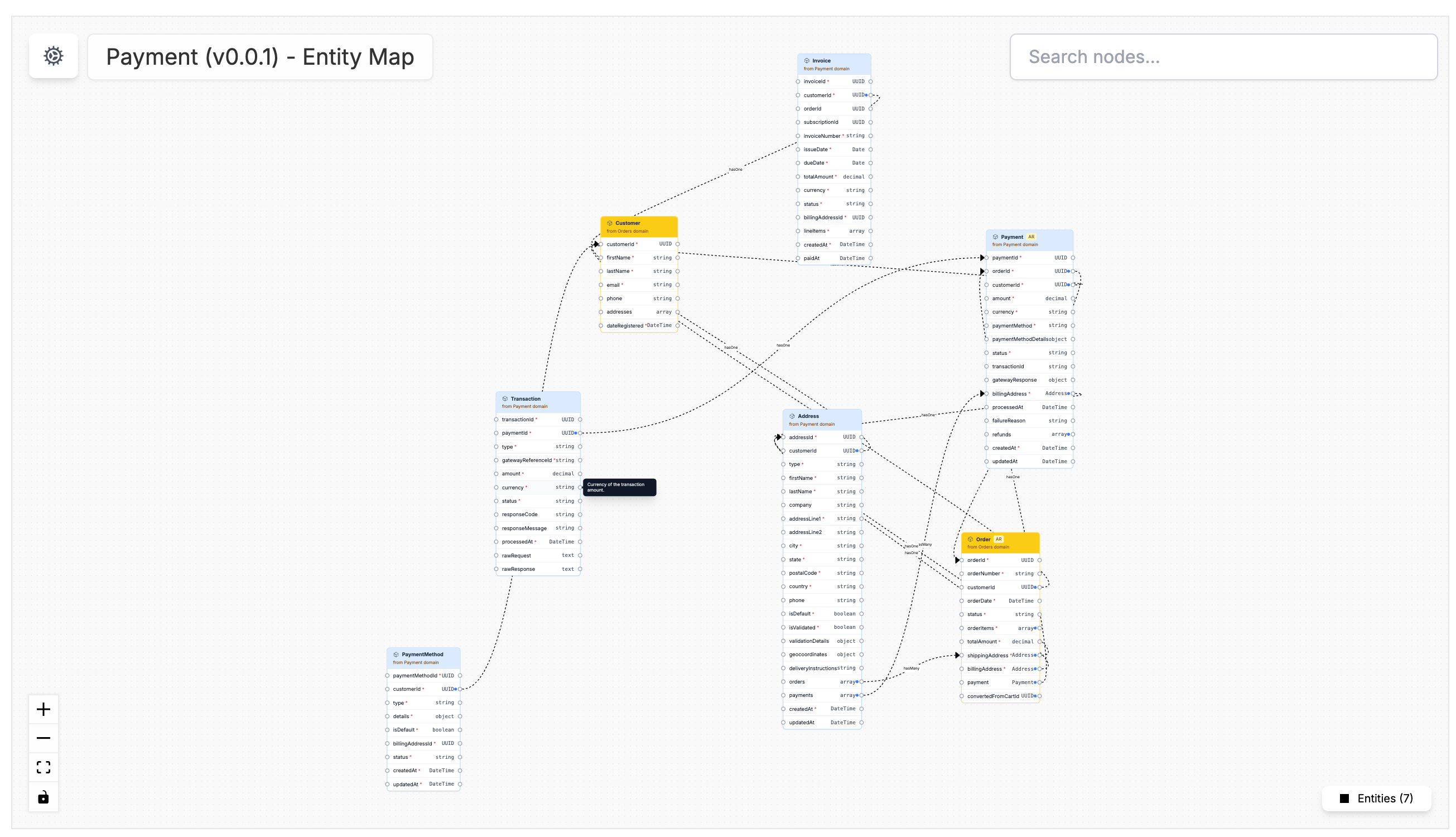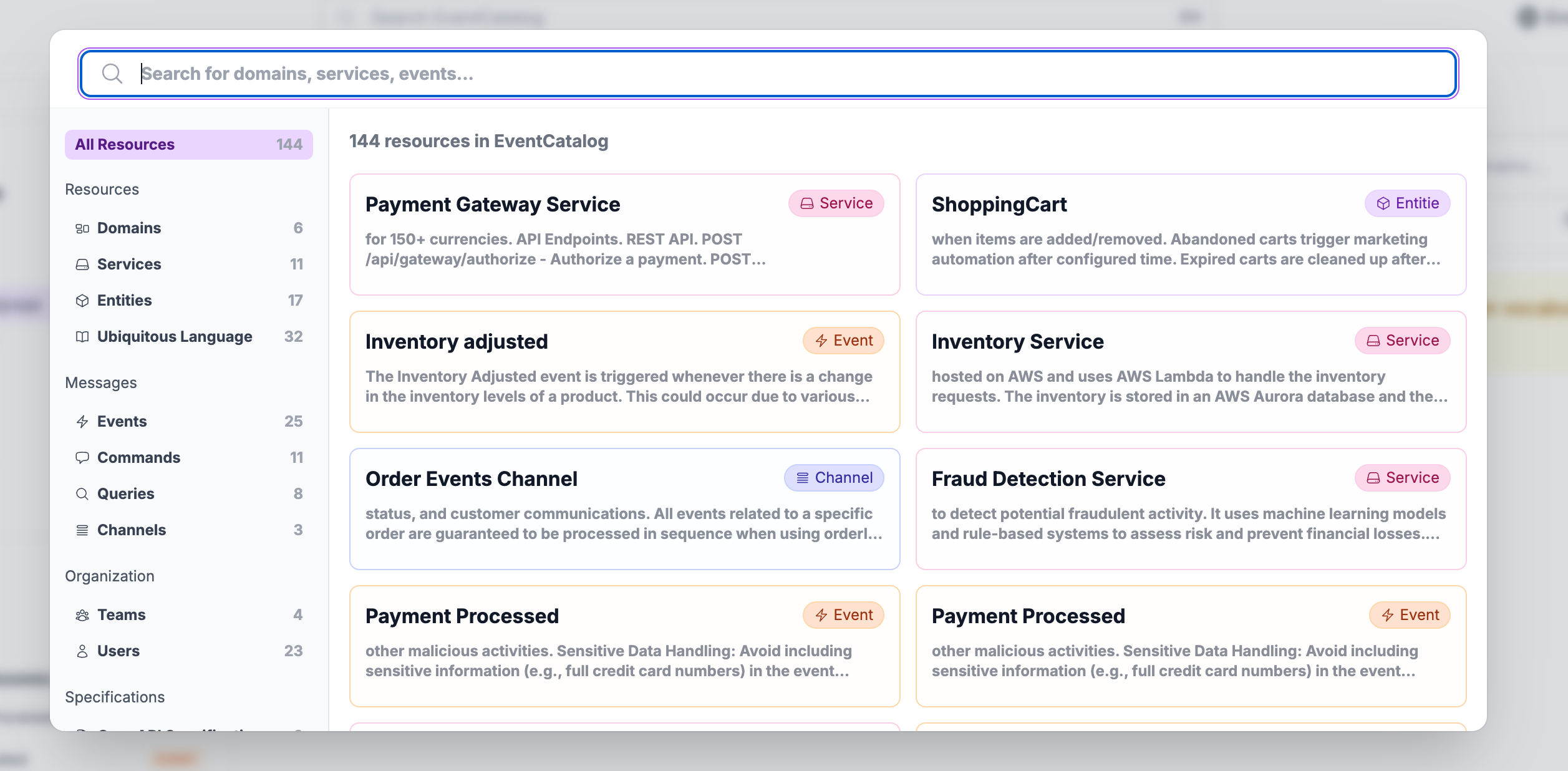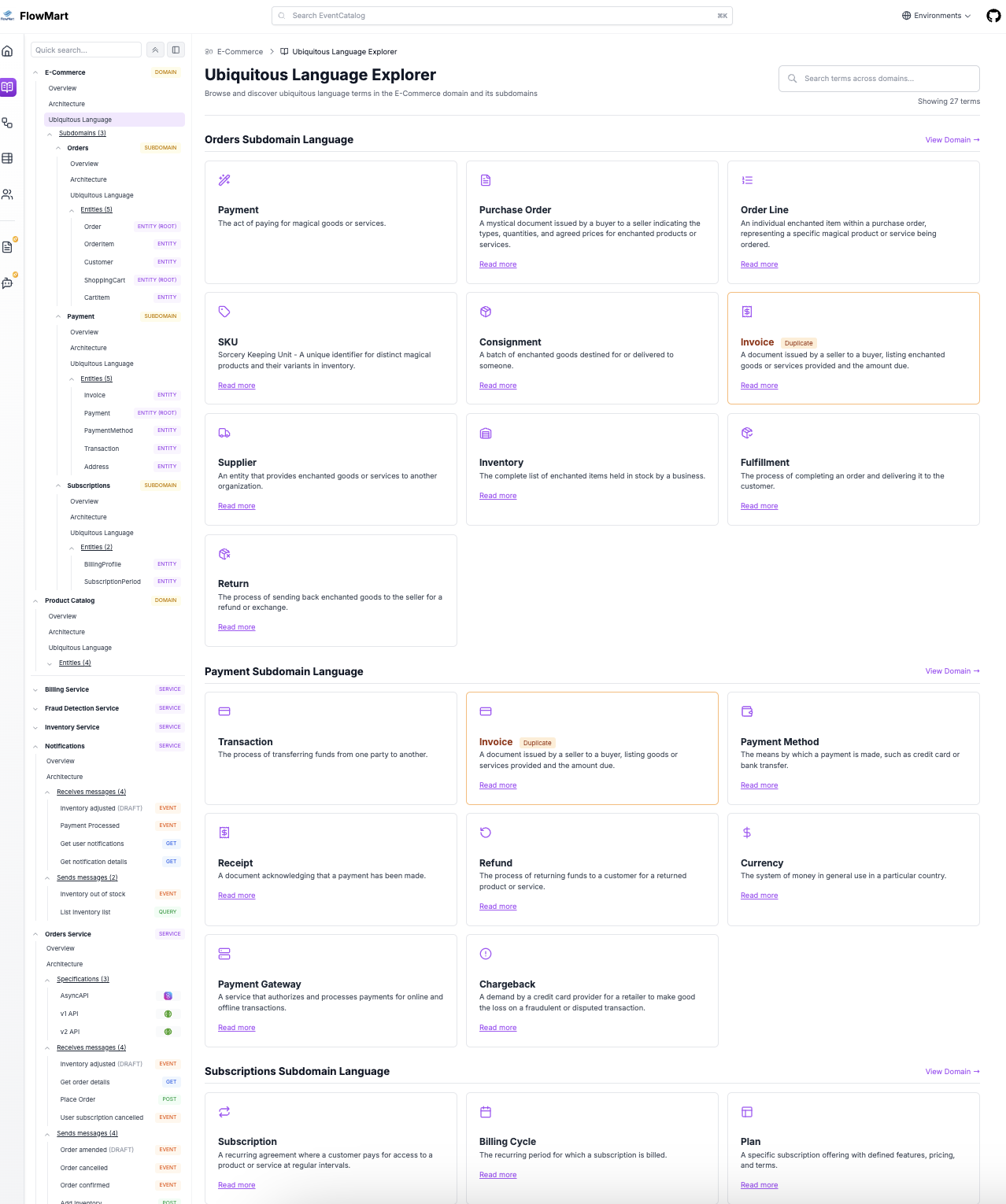Whats new in EventCatalog - July 2025
Welcome to the monthly update for EventCatalog, here you can find what's next, how to get started, and what's coming next.
- EventCatalog Linter
- New Entity Resource and Entity Map
- Fetching Schemas at Runtime
- Better Search Capabilities (Search v2)
- Customize Your Documentation Pages (Detail Panel)
- Updated Ubiquitous Language Explorer
- AsyncAPI and OpenAPI Generator Enhancements
- Other project improvements
EventCatalog Linter
We're excited to introduce the EventCatalog Linter — a powerful tool to help you maintain consistency and quality across your architecture documentation. The linter helps catch common issues, enforces best practices, and ensures your EventCatalog stays well-organized as it grows.
The linter can be integrated into your CI/CD pipelines to catch issues early and maintain documentation standards across your team.
$ npx @eventcatalog/linter
services/user-service/index.mdx
✖ error version: Invalid semantic version format [version] (schema/valid-semver)
⚠ warning Summary is required for better documentation [summary] (best-practices/summary-required)
✖ 2 problems
domains/sales/index.mdx
✖ error Referenced service "order-service" does not exist [services] (refs/resource-exists)
✖ 1 problem
✖ 3 problems (2 errors, 1 warning)
2 files checked
To get started with the EventCatalog Linter, you can read our quick guide in our documentation here.
New Entity Resource and Entity Map
We've introduced Entity Resources and the new EntityMap component to help you document and visualize your domain entities and their relationships. This new feature allows you to:
- Document your domain entities with rich metadata
- Visualize entity relationships across your architecture
- Track how entities flow through your systems
- Better understand your domain model
The Entity Map provides a visual representation of your domain entities and their relationships, making it easier to understand your domain model at a glance.
Using the EntityMap component you can embed the entity map into your documentation pages and pick and choose which entities to display.
Fetching Schemas at Runtime
EventCatalog now supports fetching schemas at runtime with the new Remote Schemas component, allowing you to dynamically load and display schema information without needing to rebuild your catalog. This feature is particularly useful for:
- Large organizations with frequently changing schemas
- Dynamic schema registries
- Keeping documentation in sync with live systems
This capability ensures your documentation stays up-to-date with the latest schema changes without manual intervention.
You can read more about the RemoteSchema component here.
Better Search Capabilities (Search v2)
We've completely rebuilt our search experience with Search v2. The new search provides:
- Faster, more accurate results
- Better filtering options
- Improved relevance scoring
- Enhanced autocomplete
- Search across all resource types including entities
The improved search makes it much easier to find the information you need across your entire EventCatalog.
To get started, just update your EventCatalog with the command:
$ npm install @eventcatalog/core@latest
Customize Your Documentation Pages
EventCatalog now gives you more control over how your documentation pages are displayed. You can now customize the detail panel to your needs.

To start configuring the detail panel, you can read our documentation here.
Updated Ubiquitous Language Explorer
The Ubiquitous Language Explorer has been significantly improved with:
- Bigger, more prominent display making it easier to browse your domain language
- Subdomain language integration — terms from subdomains now appear in their parent domains
- Better organization of domain-specific terminology
- Enhanced navigation through your ubiquitous language
This makes it much easier for teams to discover and understand the shared language across domains and subdomains.
AsyncAPI and OpenAPI Generator Enhancements
Our AsyncAPI and OpenAPI generators have received significant updates:
Draft Support for life cycle management
You can now mark resources as draft during generation, allowing you to:
- Tell your team that a message or endpoint is still in development
- Iterate on designs without affecting live documentation
- Maintain work-in-progress resources separately
You can read more about the draft support here.
Markdown Templates
The generators now support custom markdown templates, giving you:
- Full control over generated documentation format
- Ability to match your organization's documentation standards
- Flexible content generation based on your needs
These enhancements make the generators much more flexible and suitable for enterprise workflows.
Other project improvements
- Improved performance for large catalogs
- Updated Astro Versions
- New EventCatalog SDK version to support Entities
What's coming in August?
In August, we are focused on EventCatalog Studio. We are working on a visual interface for managing your EventCatalog, making it even easier for non-technical team members to contribute to your documentation. You can sign up for the early access release here.
We are also working on notifications. These will be webhook notifications you can setup and listen to when things in your catalog change. Examples of these are schema changes, breaks, new versions, etc. Usecase's include:
- Teams getting notified when a new version of a schema is published
- Trigger contract tests or infustructure when schemas change
- Provision new infrastructure when a new version of a service is published
- Trigger a build when a new version of a service is published
If you have any questions or want to join our community of over 1200 people exploring EventCatalog and event-driven architecture feel free to join us!


